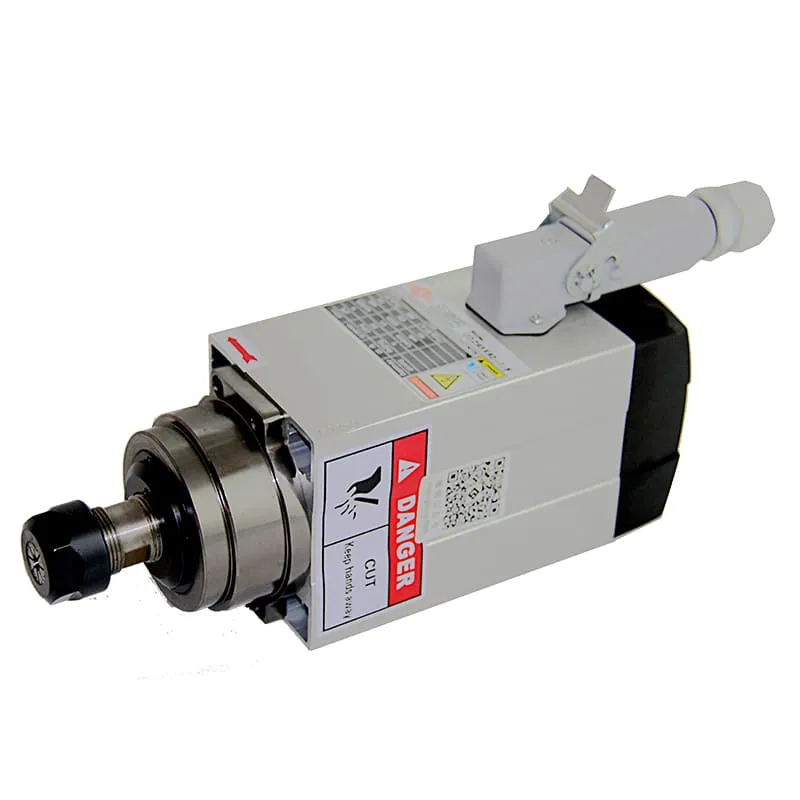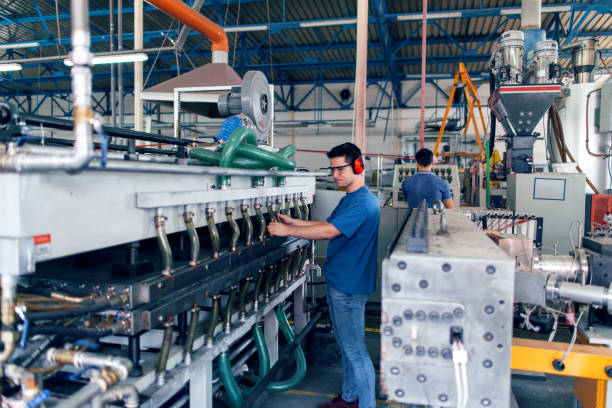How to Program a CNC Wood Router
Programming a CNC wood router is a fascinating process that bridges the gap between creativity and precision. With the proper tools, software, and a clear understanding of CNC programming, you can transform a simple piece of wood into a masterpiece. Whether you are a beginner looking to understand how CNC routers work or an expert aiming to refine your skills, this guide will take you through the essential aspects of programming a CNC wood router.
Understanding CNC Programming
CNC programming involves creating instructions for a CNC machine to follow. The language used to communicate these instructions is called G-code. G-code tells the machine where and how to move, the speed of cutting, and when to change tools.
What Is G-Code?
G-code is a programming language that commands CNC routers, mills, lathes, and other CNC machines to perform specific tasks. It determines the speed, feed, tool paths, and many other parameters of a CNC operation.
- G01: Moves the machine linearly from one point to another.
- G02/G03: Executes circular movements, either clockwise or counterclockwise.
- M-codes: Control auxiliary functions like turning the spindle on or off.
By using a combination of these commands, you can tell your CNC wood router how to cut, carve, and engrave your material.
How Does G-Code Apply to Wood Routing?
With a CNC wood router, you use G-code to manage various tasks like shaping, grooving, and engraving wood. The accuracy depends on the instructions you give to the machine, and each command must be executed precisely to get the desired outcome. Programming also allows you to specify different depths, which is crucial in creating three-dimensional designs.
Explore CNC Router Spindles to ensure you use the best spindle for your wood routing projects.
Choosing the Right Software for CNC Programming
Choosing the right software is essential for efficient CNC programming. Typically, CAD/CAM software is used to generate G-code. Here’s how it works:
- CAD (Computer-Aided Design): Used to design the part or component you want to cut.
- CAM (Computer-Aided Manufacturing): Converts your design into G-code that the CNC machine can interpret.
Recommended Software for CNC Wood Router
- Fusion 360: Offers both CAD and CAM features, allowing you to design parts and create tool paths.
- Vectric VCarve: Popular among woodworkers, this software is user-friendly and focuses specifically on CNC routing.
- Inkscape with G-code Extension: Ideal for beginners; it is free and can be used to create basic tool paths.

The 2.2KW ER16 Air-Cooled Spindle is an excellent choice for precision woodworking.
Preparing the CNC Router for Programming
Before starting your CNC programming, you need to prepare the router. This involves setting up the machine, selecting the right tools, and securing the material.
Setting Up the Machine
- Install the Spindle: Attach the spindle securely, ensuring it aligns correctly with the router’s axis.
- Select the Router Bits: Choosing the right router bit is essential for achieving the desired finish. Bits can vary based on their type, like end mills, ball nose, and V-bits.
- Secure the Material: Use clamps or a vacuum table to hold the workpiece firmly in place to prevent movement during cutting.
Tool Selection
The selection of the right tool is pivotal for achieving quality cuts. For wood routing, end mills and ball nose bits are commonly used. Here are some recommendations:
- End Mills: Used for roughing cuts and for quickly removing material.
- Ball Nose Bits: Ideal for intricate detailing and 3D carving.
Find High-Quality CNC Router Bits to make sure you are using durable and precise tools for your CNC projects.
Creating Tool Paths for Wood Routing
Creating a tool path is the most critical step in CNC programming. It defines how the cutting tool moves to create the part from the material. Tool paths can be of different types:
Types of Tool Paths
- Profile Tool Path: Cuts along the perimeter of your design.
- Pocket Tool Path: Removes material within a closed boundary, useful for making recesses.
- Engraving Tool Path: Used for carving out fine details and lettering.
Each tool path type has different parameters, such as cut depth, feed rate, and spindle speed, which can be adjusted depending on the material.

The 1.5KW ER11 Air-Cooled Spindle is ideal for tasks requiring detailed engraving and smooth edges.
Setting Up G-Code Parameters
Setting G-code parameters correctly is crucial for ensuring precision. Here are the key parameters that must be configured for CNC wood routing:
- Feed Rate: Controls the speed at which the router bit moves through the material. A slower feed rate may result in smoother edges but longer cut times.
- Spindle Speed: Determines the rotations per minute (RPM) of the spindle. Different types of wood require different spindle speeds for optimal cuts.
- Depth of Cut: Specifies how deep the router cuts on each pass. For wood, multiple shallow passes are often better than one deep cut.
These parameters need to be adjusted based on the type of wood and the type of router bit being used.
Simulation and Testing
Running a simulation before actual cutting is highly recommended, as it helps you visualize how the tool will move and catch any errors in your code.
Steps for Simulation
- Run the G-code in CAM Software: Most CAD/CAM software allows you to run a simulation to visualize the cut.
- Check for Collisions: Ensure that there are no collisions between the tool and the clamps or fixtures.
- Adjust Feed and Speed: Modify the feed rate and spindle speed if the simulation shows excessive tool load or potential issues.
Running the CNC Wood Router
Preparing for the First Cut
Once your G-code is ready and your simulation checks out, it’s time to run the CNC router.
- Set Your Zero Points: Manually set the X, Y, and Z axes to zero. This is essential for ensuring that your cuts are accurate.
- Dry Run: Perform a dry run without the spindle engaged to verify the path.
- Execute the G-code: Once you are confident, execute the G-code and start cutting.
Buy CNC Spindles and Accessories to make sure you have all the tools you need for seamless CNC operations.
Common Issues and Troubleshooting
Even with the best preparation, issues can arise. Here are some common problems and how to fix them:
Problem 1: Chatter During Cutting
Chatter is vibration caused by the cutting tool. It can be solved by reducing the feed rate or increasing the spindle speed.
Problem 2: Material Tear-Out
Tear-out occurs when the tool leaves a rough or splintered edge. This can be minimized by using a sharp router bit and lowering the feed rate.
Problem 3: Tool Breakage
This is usually due to excessive cutting force. Consider reducing the depth of cut or increasing the spindle speed.
Benefits of Using a CNC Router for Woodworking
CNC routers provide several advantages over traditional tools, especially for woodworking:
- Precision: CNC routers can achieve an accuracy of up to 0.001 inches, making them perfect for detailed work.
- Repeatability: They are excellent for producing multiple identical parts.
- Versatility: CNC routers can work with different types of wood and even soft metals.
FAQs About Programming CNC Wood Routers
1. What software is best for programming CNC wood routers?
Fusion 360 and Vectric VCarve are great choices for both beginners and advanced users due to their user-friendly interfaces and extensive features.
2. How do I avoid tear-out when cutting wood?
To avoid tear-out, use a sharp tool, reduce the feed rate, and always cut along the grain.
3. What is the best spindle for CNC wood routing?
The 3.5KW ER25 Air-Cooled Spindle is an excellent choice for robust projects involving both soft and hardwood.
4. Can I use free software for CNC programming?
Yes, software like Inkscape with G-code extensions can be used for simple projects, but advanced features are available in paid versions.
Conclusion
Programming a CNC wood router requires understanding G-code, choosing the right tools and software, and setting accurate parameters. By carefully preparing your machine, selecting the appropriate tools, and taking advantage of simulation features, you can create beautiful and precise wood designs. Whether you are making custom furniture, decorative items, or prototype models, a CNC router can help bring your vision to life with efficiency and precision.
For a comprehensive range of CNC spindles and accessories to enhance your router’s capabilities, visit Spindle Motor Shop.

